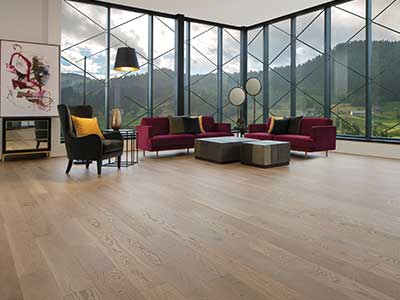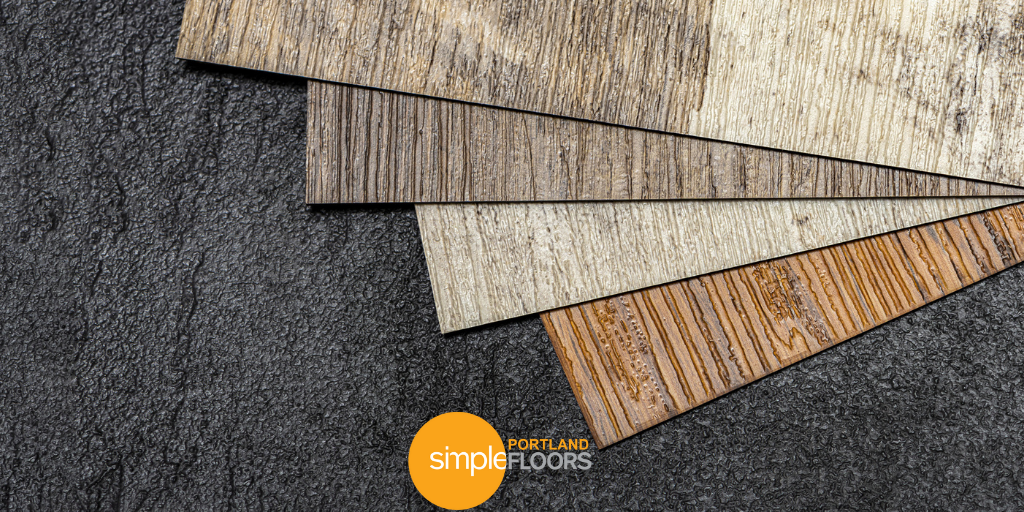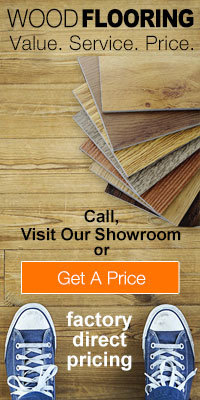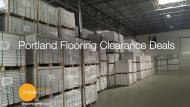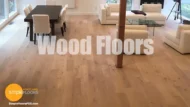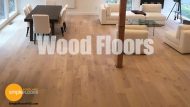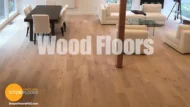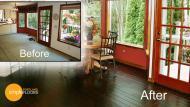Luxury Vinyl Planks (LVP) and Luxury Vinyl Tile (LVT) are wonderfully affordable flooring options. And they’re trending hot if you look at home remodeling sites.
Vinyl in general is trending because you can get the look of quality wood and stone for a much more affordable price. So if you’ve been thinking about updating your home with a more expensive flooring option, you may want to consider the vinyl solution first to see if you like it.
And you can spend more on accessories, decorations, and furniture.
Let’s look at some common questions about vinyl.
Laminate vs. Vinyl
Are you wondering if there’s a difference between vinyl and laminate flooring? While they do overlap in a few ways, there are some particular differences you should know.
Vinyl flooring is made from 100% synthetic material. The base layer is usually fiberglass coated with PVC vinyl and then a plasticizer. The sheet is printed and embossed with a surface layer. Then the wear layers which protect against scratches is applied. The final coating is designed to protect the floor from UV rays which we know as sun damage.
Vinyl flooring ranges in thickness from 1.5mm to 5mm. For luxury vinyl planks (LVP) and tile (LVT) it can range from 6mm up to 30mm. But from 12mm up to 20mm is the standard for commercial use. And under 12mm for light commercial and residential use.
Laminate flooring, on the other hand, has a core made up of highly compressed wood fibers. It also is comprised of four layers but usually doesn’t have the top UV screen coating. Laminate floors range in thickness from 6mm to 12mm.
Vinyl flooring today is very different from the vinyl flooring even ten years ago. They’ve updated the manufacturing process to be more green with fewer off-gassing. The vinyl is sturdier and longer-lasting.
Luxury Vinyl Planks look like wood and can mimic a rustic or a higher-end solid wood floor. Luxury Vinyl Tile can mimic just about any kind of tile or stone floor. (Link to my other article on LVP)
Laminate only comes in one flavor – wood planks. Vinyl can appear to be wood, stone, or tile. You can get a wider variety of colors, patterns, and textures with vinyl that can create the perfect anchor to center your home decoration.
Vinyl Flooring for Your Kitchen
Is vinyl flooring suitable for your kitchen? Absolutely. If you have a farmhouse kitchen, you can get wide planks in vinyl sheet or LVP. You won’t have to worry about water getting trapped between planks of wood causing mold or rot because the vinyl creates a seamless floor.
Vinyl also won’t get scratched or gouged if you drop things on it like cans of tomatoes or a plate of ratatouille. We can’t make any promises about the plate, though.
Bathroom Vinyl Flooring
Your bathroom is another great place for vinyl flooring. You can buy the vinyl sheets with lots of decorative patterns on it. Using vinyl instead of tile makes cleaning easier. Often the grout will get dirty and dingy with age and use even if you mop regularly.
But with vinyl, the “grout” stays the same color for years afterward. And you won’t have to pay for special steam cleaning.
Best Flooring for Dogs
 Vinyl flooring is great for when you have dogs. It’s easy to keep clean and has very low maintenance compared to the tile that has grout or carpeting. And if there’s a spill or an accident? You can quickly wipe it up.
Vinyl flooring is great for when you have dogs. It’s easy to keep clean and has very low maintenance compared to the tile that has grout or carpeting. And if there’s a spill or an accident? You can quickly wipe it up.
And, your fur friend’s claws won’t scratch vinyl like they could wood flooring.
What Is Rigid Core Flooring
Rigid Core flooring is the most popular type of vinyl plank flooring. It’s different from LP because it has a bottom layer of foam or cork adding a nice spring when you walk on it. It’s perfect for higher traffic areas or places where you may be standing on your feet like in the kitchen.
And it comes in a wide variety of natural wood coloring and finishes. You can have a more formal-looking cherry or a distressed oak. And yes, it’s still vinyl flooring so it’s waterproof and scuff and scratch-resistant.
Vinyl Flooring Compared to Tile
Vinyl is more flexible than tile. You can purchase vinyl sheeting with lovely tile designs. You can purchase LVT that looks like stone or tile and create your own patterns. It’s fast and easy to install. And if you drop something, it won’t crack like tile might.
When tile is installed, it’s glued fairly securely to the subfloor. When you want to change the look with vinyl, you lift it up and change it out. With tile, you need an expert to come in and remove the tile, grout and glue that was used.
What Else Is It Good For?
Because of its durability and affordability, you can use LVP and LVT for camping cabins, beach homes, and your basement. It’s great for a mudroom since it’s quick and easy to clean. You can mop up or hose off the mud and not worry about scratching the surface of the flooring or be concerned about any water causing the flooring to warp or rot.

